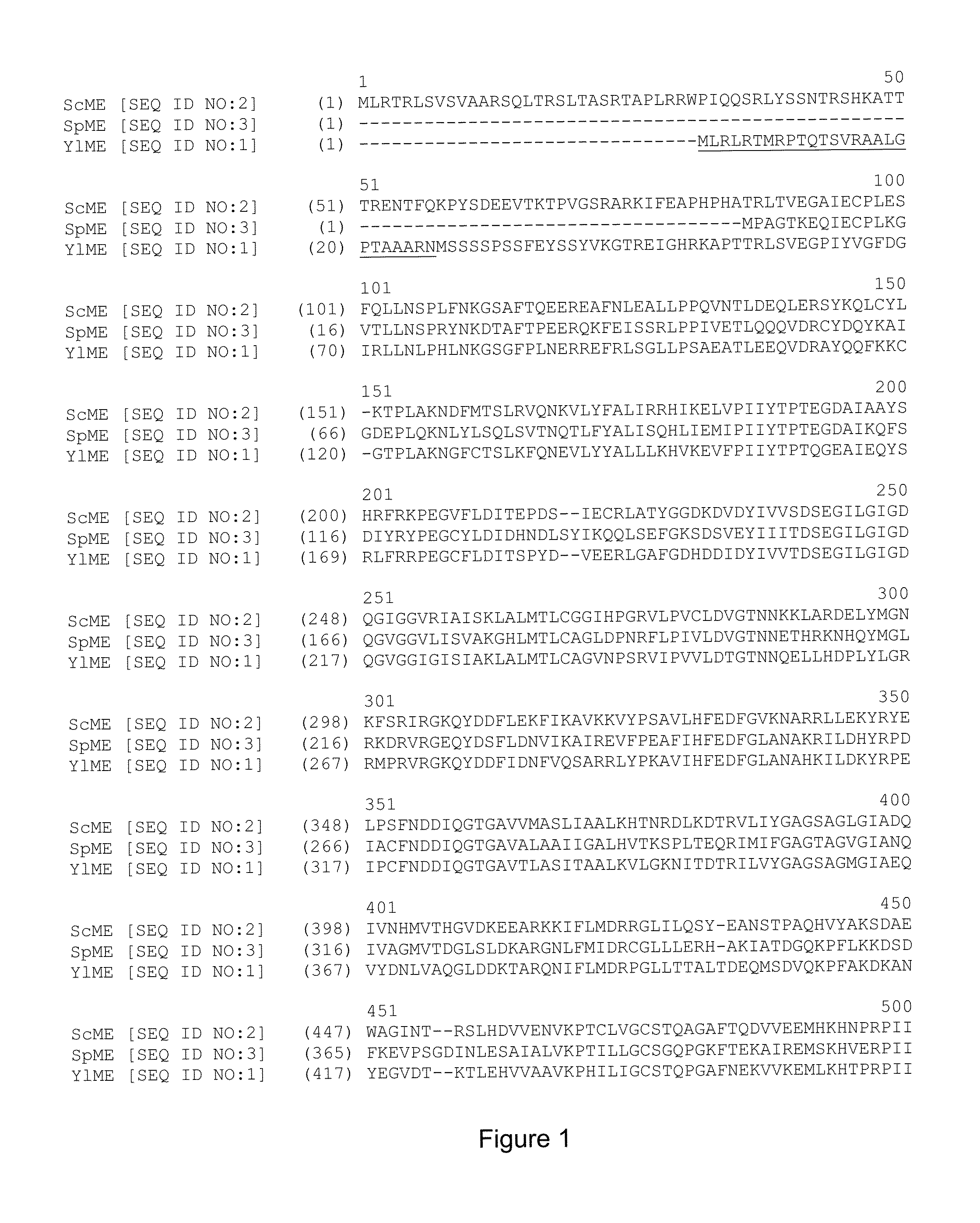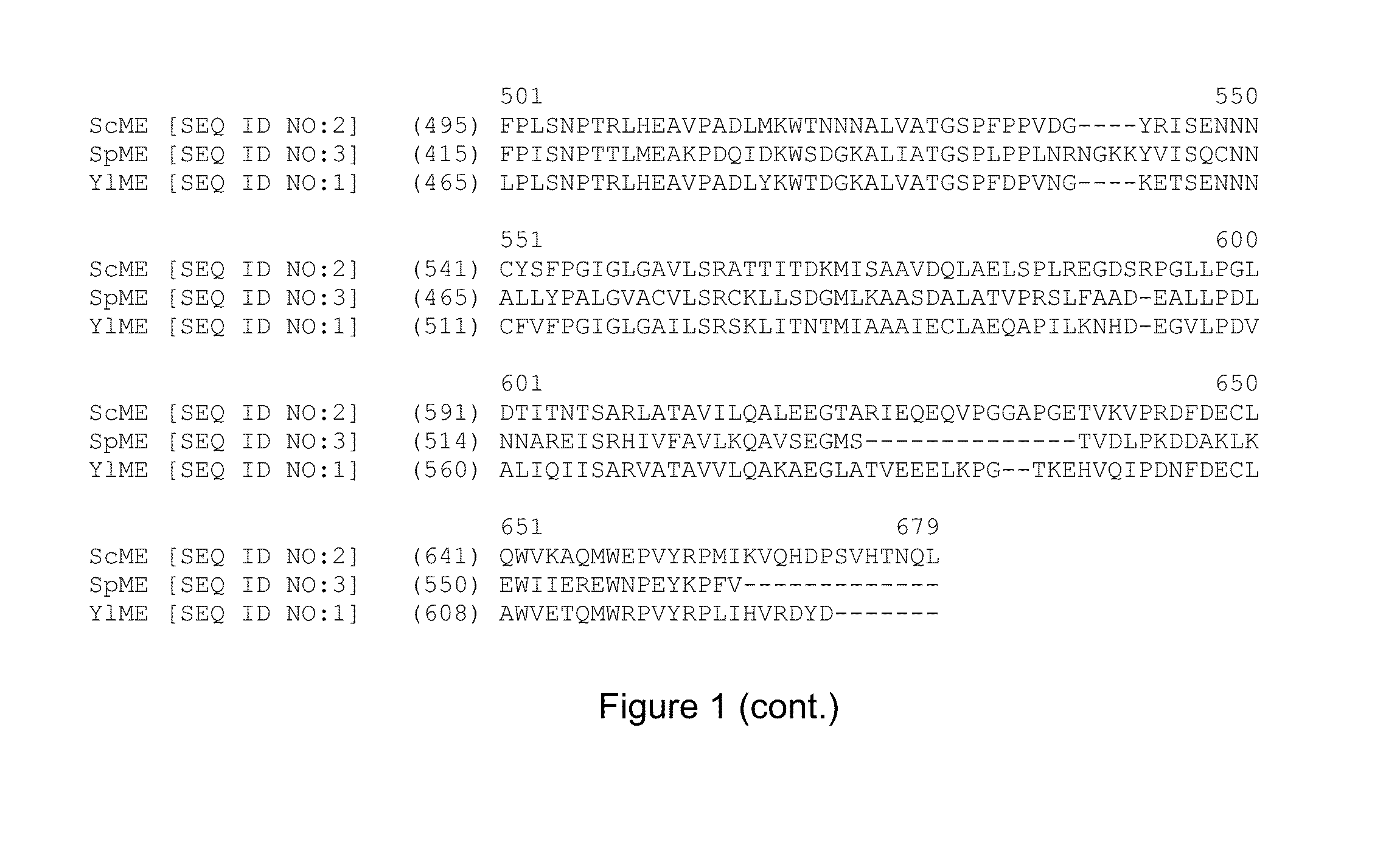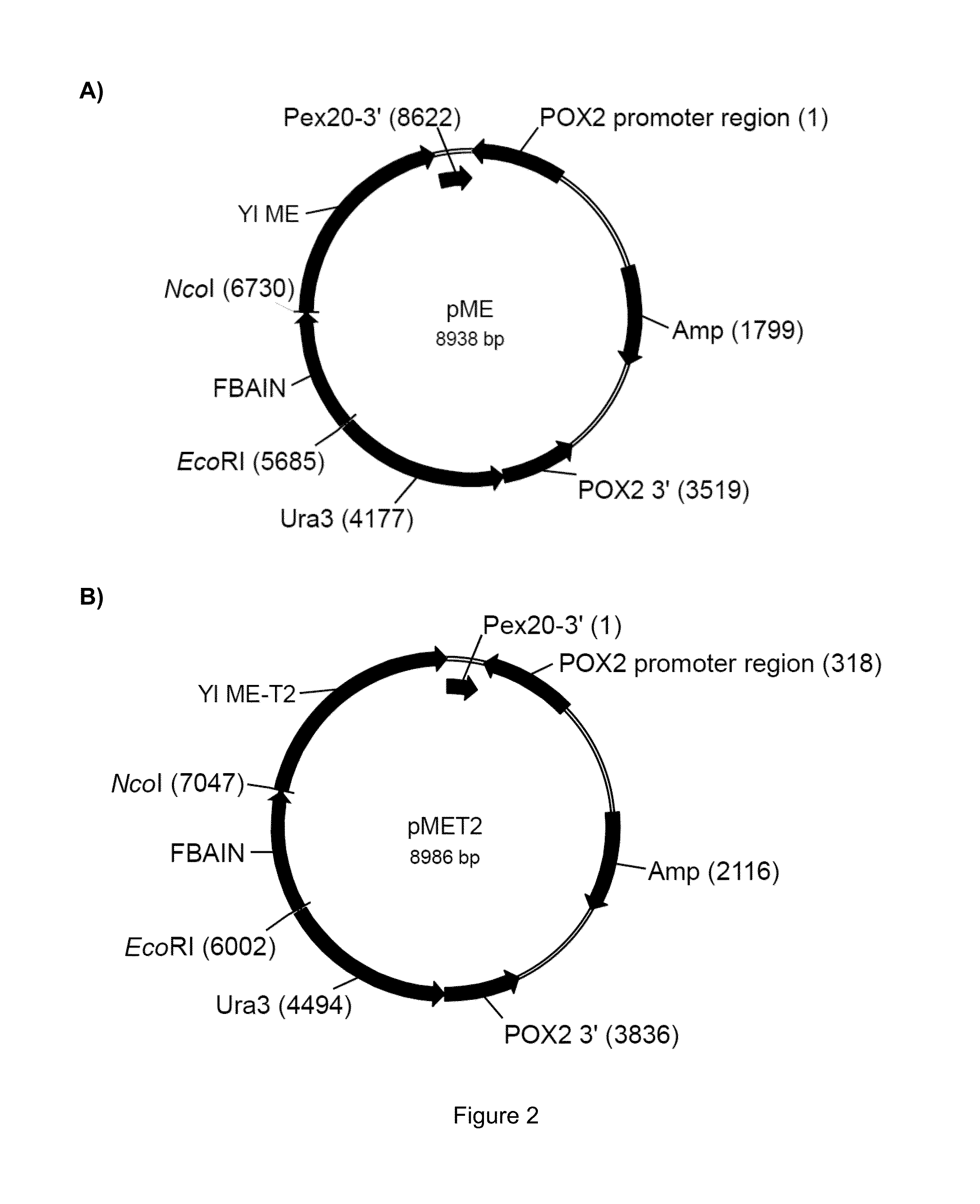Expression of cytosolic malic enzyme in transgenic Yarrowia to increase lipid production
a technology of cytosolic malic enzyme and transgenic yarrowia, which is applied in the field of biotechnology, can solve the problem that malic enzyme may not play as large a role in lipid production, and achieve the effect of increasing the lipid conten
- Summary
- Abstract
- Description
- Claims
- Application Information
AI Technical Summary
Problems solved by technology
Method used
Image
Examples
example 1
Vector Construction for Native or Truncated (Cytosolic) Y. lipolytica Malic Enzyme Overexpression
[0165]The amino acid sequence of Yarrowia lipolytica malic enzyme (ME) was analyzed to determine whether a mitochondrial targeting sequence (MTS) is contained therein. After identifying a putative MTS, vectors for full length (mitochondrial) ME and truncated (cytosolic) ME expression were constructed.
[0166]Malic Enzyme MTS Identification
[0167]Y. lipolytica ME sequence (YIME, SEQ ID NO:1, GenBank Acc. No. XP—504112) was analyzed using the TargetP 1.1 Server sequence analysis prediction program (Center for Biological Sequence Analysis, Technical University of Denmark, Lyngby, Denmark) as described by Emanuelsson et al. (2000, J. Mol. Biol. 300:10051016) to determine whether this protein may contain any particular subcellular localization sequences such as an MTS. This analysis suggested that Yarrowia ME contains a putative MTS of 26 amino acid residues in length (FIG. 1, underlined in YIME...
example 2
ME Overexpression and its Effect on Lipid Production in Y. lipolytica
[0174]The effect of overexpressing wild type (full length) or cytosolic ME on the lipid content of different Y. lipolytica strains was determined using the constructs described in Example 1.
[0175]In the following gene overexpression studies, Y. lipolytica strains were transformed with either the FBAIN::YIME::PEX20 or FBAIN::YIME-T2::PEX20 chimeric gene expression cassette using plasmid pME or pMET2, respectively, that was digested with BssHII and SphI. For transformation control purposes, the strains used in each experiment were transformed with plasmid pBlue-YURA3 (FIG. 2C, SEQ ID NO:14) that was digested with KpnI and Sail. Plasmid pBlue-YURA3 was derived from the cloning vector pBluescript®-SK(−) (Stratagene, La Jolla, Calif.) that was modified to contain the Yarrowia URA3 gene (GenBank Acc. No. AJ306421) in the pBluescript®-SK(−) multiple cloning site. Transformants were selected on plates lacking uracil, as t...
example 3
Deletion of the Gene Encoding ME and its Impact on Lipid Production in Y. lipolytica
[0193]Lipid production in Yarrowia lacking a native ME gene and in elevated lipid-producing transformants thereof was measured. Elevated lipid production was induced by diacylglycerol acyltransferase-2 (DGAT2) overexpression.
[0194]Malic Enzyme Gene Deletion
[0195]Plasmid pME-KO (FIG. 6, SEQ ID NO:15) was constructed to delete the ME gene in wild type Yarrowia through homologous recombination. FIG. 5 shows the general scheme of the disruption strategy. The 5′- and 3′-flanking regions of the ME gene were amplified by PCR using the following primer pairs: YME-5-1 (SEQ ID NO:16) / YME-5-2 (SEQ ID NO:17) for the 5′-flanking region, and YME-3-1 (SEQ ID NO:18) / YME-3-2 (SEQ ID NO:19) for the 3′-flanking region.
[0196]The PCR amplification was performed using Yarrowia genomic DNA as template. The reaction mixture contained 1 μL of the genomic DNA, 1 μL each primer (from 20 μM stocks), 22 μL water, and 25 μL Ex T...
PUM
 Login to View More
Login to View More Abstract
Description
Claims
Application Information
 Login to View More
Login to View More - R&D
- Intellectual Property
- Life Sciences
- Materials
- Tech Scout
- Unparalleled Data Quality
- Higher Quality Content
- 60% Fewer Hallucinations
Browse by: Latest US Patents, China's latest patents, Technical Efficacy Thesaurus, Application Domain, Technology Topic, Popular Technical Reports.
© 2025 PatSnap. All rights reserved.Legal|Privacy policy|Modern Slavery Act Transparency Statement|Sitemap|About US| Contact US: help@patsnap.com



